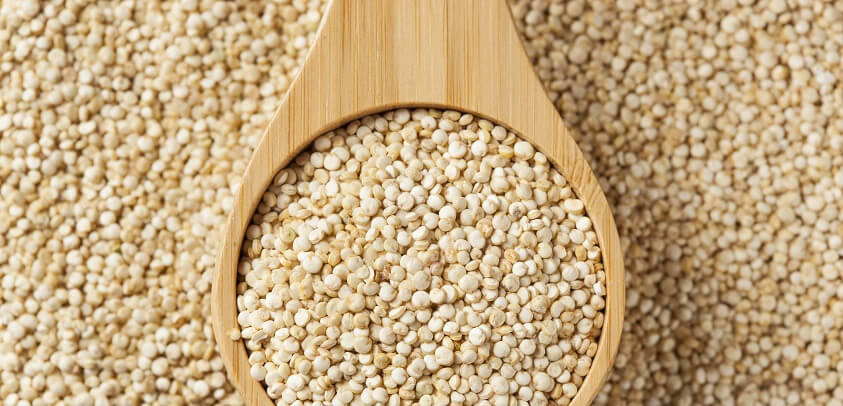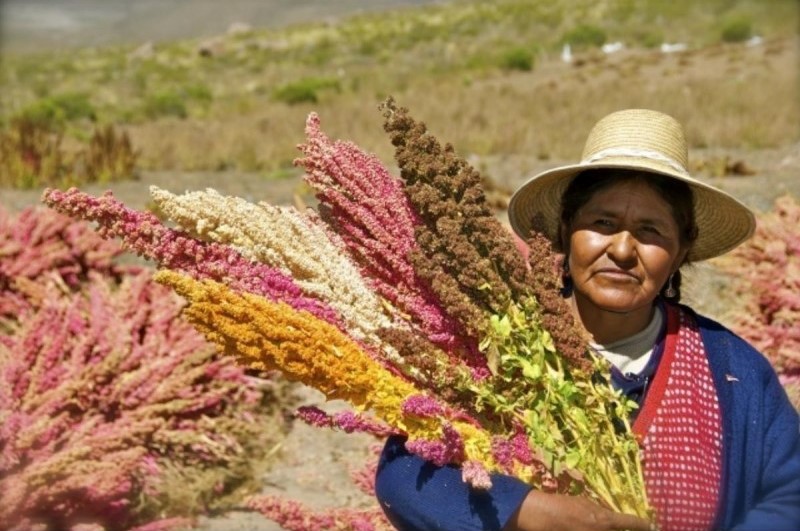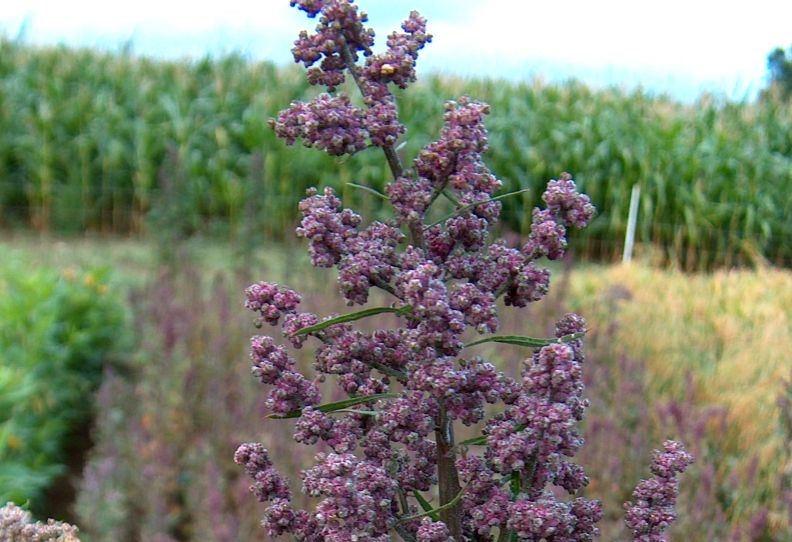Quinoa is gaining more and more ground in the European markets. It is a crop that originates from Latin America, with the oldest records mentioning its consumption by the native populations of Peru and Bolivia even 4,000 years ago. Quinoa is a highly nutritious – gluten free – alternative crop of the pseudocereal class. One of the most important turning points in the process of spreading quinoa to the rest of the world was the declaration of 2013 as the “year of quinoa” by the United Nations.
When launching the 2013 International Year of Quinoa, senior United Nations officials joined South American leaders to praise the nutritional value of the ancient “superfood”, a low-cost response to global hunger and the starting point for a more equitable international economic system, especially the food trade. “Let us work together to make sure the benefits of this extraordinary grain can be felt by those who need it most,” then Secretary-General Ban Ki-moon said, emphasizing that quinoa, a protein rich cultural anchor and staple of the diet of millions of people throughout the Andes for thousands of years, could contribute significantly to UN’s “Zero Hunger Challenge.” This is thanks to two great advantages — it is extremely nutritious and highly adaptable in different climates —that the quinoa grain has become essential to meeting global climate goals and countering the effects of a warming planet, where desertification and land degradation were becoming ever more pressing issues.
“Since then, its demand has recorded a continuous upward trend, and especially in the EU Member States,” Assistant Professor of Agriculture and Innovative Crops at the Agricultural University of Athens (AUA), Ioanna Kakabouki, told the Athens-Macedonian News Agency, adding that “but due to its excellent nutritional value, quinoa can also contribute to the ecological goals of the European Union”.

Quinoa and Europe
With the effects of climate change becoming increasingly apparent, the European Commission has designed a series of agri-environmental measures aimed at managing the climate crisis and ensuring food sufficiency. The “European Green Deal” is one of the most important strategies of the European Union and especially the “Farm to Fork” strategy that aspires to reduce the use of agrochemicals by 20-50% by 2030.
Following these initiatives, the research community has focused on how to reduce inputs to the primary sector, while maintaining the productive dynamics of modern agricultural systems. One of the most promising solutions is the adoption of innovative, alternative, xeric and low-input crops, such as quinoa.
“The case of quinoa is typical of how the introduction of innovative crops can achieve the goals of the Green Deal. Initially, the plant’s adaptability to unfavorable conditions for other crops, and its low fertilizer and irrigation requirements meet the conditions set by the Agreement” said Ms. Kakaboukis to Athens -Macedonian News Agency and added “the satisfactory yields, which, according to the literature are feasible for our country, combined with the high nutritional value of the seed, make us optimistic about the productive and economic dynamics of quinoa in Greece”.
The European Union is the largest importer of quinoa from the main producing countries which are Peru, Bolivia and Ecuador. Despite fluctuations in supply and trade prices, import volumes have proved stable over the past five years, with only a slight decline in 2018, and there is still scope for future growth. According to official data, in 2019 the total European import of quinoa amounted to 28 thousand tons (excluding European production and re-export).

Quinoa in Thessaly
Professor Kakabouki, together with her research team consisting of PhD candidates Antonios Mavroidis and. Panteleimon Stavropoulos, is investigating best cultivation practices for quinoa, with the aim that soon, the cultivation of this grain in large areas in Greece will be competitive with other traditional grains as well as several spring ones.
The region of Thessaly has been chosen for the development of quinoa crop, due to its ideal climatic conditions for the cultivation of this specific crop.
“For the last few years, we have been working with this specific crop, in collaboration with the private sector in the region of Thessaly and we have ascertained and improved the needs of the crop under Greek conditions,” said professor Kakabouki to the Athenian-Macedonian News Agency, concluding “I will it is a big step towards reducing the environmental footprint of Greek agriculture and will bring us closer to achieving our green goals”.
Quinoa is an adaptable plant that does not require much water (it is grown in the Atacama desert and is therefore drought-tolerant), contributing to lower production costs that are comparable to wheat.
A pilot crop was grown on 50-70 hectares of land in Thessaly and produced better yields than in South America.
Dimitris Bilalis, professor of Agriculture and Organic Agriculture and director of the Agriculture Laboratory of the Agricultural University gave an interview to Naftemporiki TV, on research carried out by the Agricultural University in the area of Thessaly, explaining how quinoa cultivation could be more competitive from traditional grain crops:
“Since 2021 we have been systematically studying the cultivation of quinoa in the area of Thessaly, at the level of plots of land that reach up to 500 vertical acres, in order to determine the costs, the real and the environmental benefit for the grower, but also the social benefit. After 3 years of research and systematic study, we saw that quinoa is a promising crop and the Thessalian plain will be able to cover part, not only of our national needs, but also of European needs, which is our ambition”.
Explaining that quinoa is an ancient plant with a very hard dynamic that adapts very easily, a it is cultivated in the desert, he pointed out that “it is a plant that we can produce and export instead of importing. It’s a plant that has adapted and gave us better yields than even Latin America.” Professor Bilalis pointed out that in the language of the Quechua, the Andean Indians, quinoa means “mother of seeds.”
Translated from Athens-Macedonian News Agency article on Quinoa Cultivation in Greece by Th. Papakostas and from Naftemporiki TV interview with prof. Bilalis
TAGS: AGRICULTURE | FOOD & DRINK














